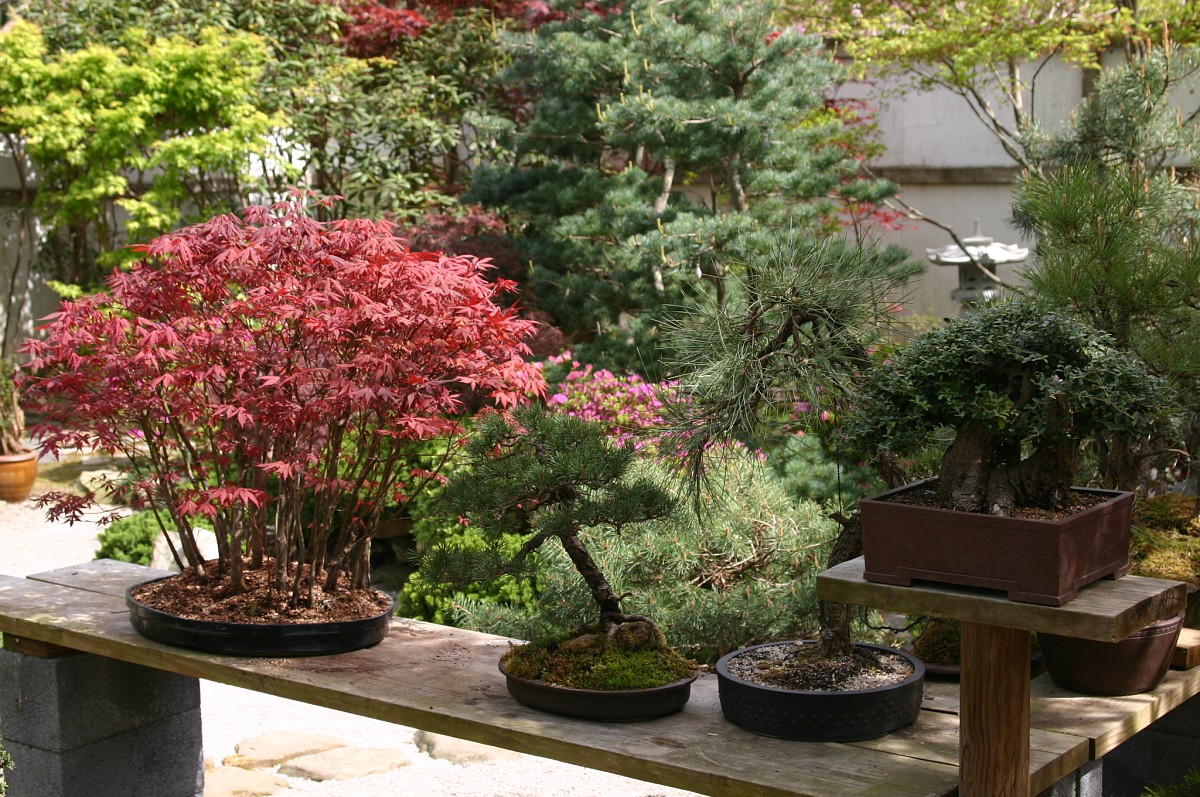Bonsai for Beginners
 The term bonsai ("tree in a tray") is used to describe trees and shrubs trained in miniature forms and grown in special containers. A bonsai is dwarfed by means of pruning, wiring, watering, repotting and fertilizing. The container you grow it in should be frost proof and have drainage holes.
The term bonsai ("tree in a tray") is used to describe trees and shrubs trained in miniature forms and grown in special containers. A bonsai is dwarfed by means of pruning, wiring, watering, repotting and fertilizing. The container you grow it in should be frost proof and have drainage holes.
When purchasing a bonsai, look at the overall shape of the plant. Take a photograph or draw a picture of how the tree or shrub looks now and then decide how you would like it to look in the future. As you examine your plant, its natural shape may help you decide on a style, whether formal or informal. Trees with straight trunks work well for formal bonsai while those with trunks that are spreading may form a natural cascade -- a more informal look.
Good Trees and Shrubs for Beginners
The following are outdoor (temperate climate) plants, which are adaptable to a range of environments, and make good beginner projects:
- beech-Fagus species
- box-Buxus species
- Chinese elm-Ulmus parvifolia
- crabapple-Malus species and cultivars
- ginkgo-Ginkgo biloba
- juniper-Juniperus chinensis var. procumbens 'Nana' and other selections
- larch-Larix species
- maples, including Japanese maples-Acer palmatum selections and Trident maple-Acer buergerianum
- pines-Pinus sylvestris and other species
- spruces-Picea species.
Where to locate your bonsai
Don't make the mistake of growing bonsais as indoor plants. They do best (unless they are tropical) when grown outdoors year-round. Like their full-size cousins growing in your backyard, temperate climate bonsai need to experience the four seasons (go through dormancy, set flower buds, etc). Make sure they receive plenty of light, but protect them from drying winds and provide some shade during hot months for shade-loving types.
In Zone 6 or regions with colder climates, starting in November or December and through the winter, you can keep your bonsai in a cold frame or in a cool, unheated greenhouse, garage, or unheated sun porch.
Although they need to experience 4 seasons, it is best to keep them from freezing and thawing. Be sure to vent cold frames on hot, sunny days. March 1st, or once temperatures get above 40 degrees F, is a good time to bring them back outside.
Watering Bonsai
Water when the top of the soil is dry to the touch. Often this will be on a daily basis. Adjust according to the season. For example, in the winter check plants in cold frames every few weeks. Use a watering can with an attachment that breaks up the water or a hose with a rain-like spray.
Bonsai Fertilizing Guidelines
1. As a rule, fertilize during the active growing months.
2. For vegetative growth, choose fertilizers with a high nitrogen analysis. (N)
3. For flowers and fruit, use those with more phosphorous (P) and potassium (K) than nitrogen.
4. Feed deciduous trees like maple and elm more than conifers, such as pine and spruce.
Repotting and Pruning Bonsai
Younger trees in the beginning stages of training need repotting more frequently (every 1-2 years) than mature trees, which can be left in the same container for six years or more. In general, deciduous trees require repotting more often than coniferous ones, which only need to be repotted every 3 to 5 years.
The best time to prune foliage plants is when they are actively growing. Find out whether your flowering plant species blooms on new or old wood. This will help you determine the best time to prune and avoid removing potential flowers or fruit. Roots should be pruned when plants are repotted.
If you enjoy gardening, planting and caring for your bonsai can be a great hobby. But if you are very busy or lack a green thumb, you might prefer to hire a landscaper for the job.
Updated November 25, 2018.
Looking for a Pro? Call us (866) 441-6648

Landscaping Average Costs
Landscapers Experiences

Yard Cleanup By A Local Landscaper Who Cares About Customers

New Low-Maintenance Landscaping To Update Our Yard



